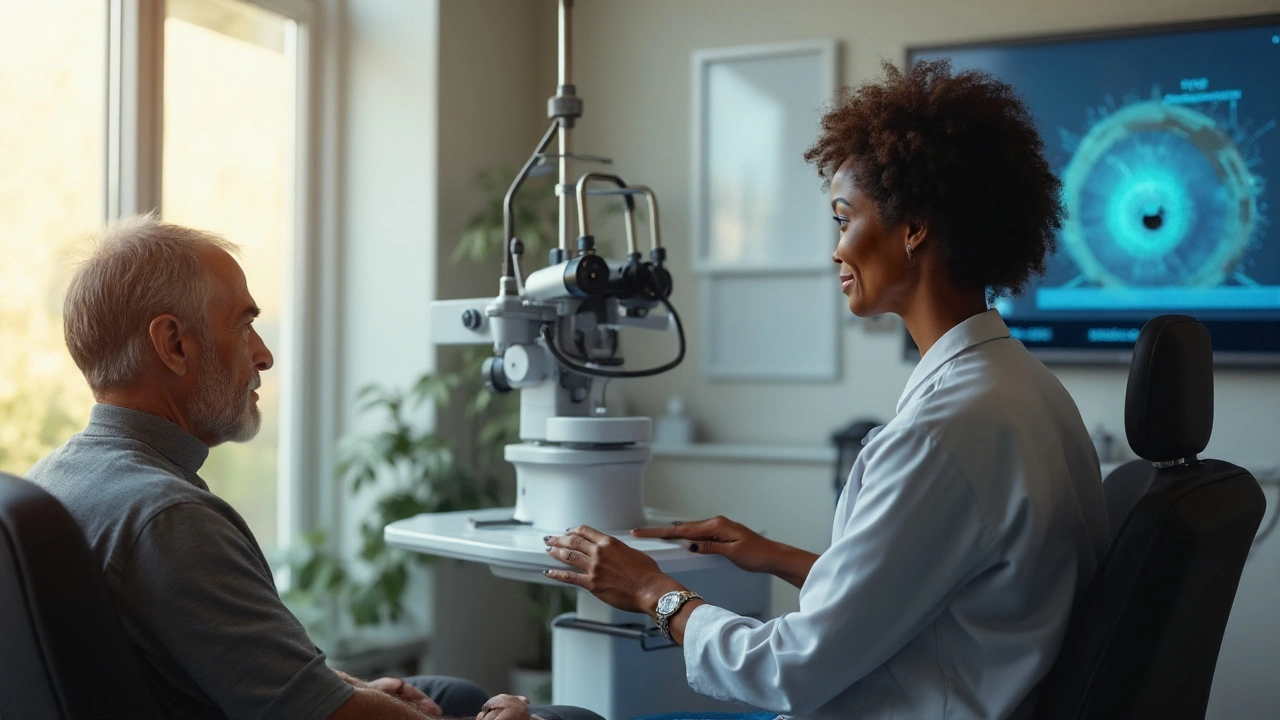
Betaxolol Guide: Long‑Term Glaucoma Management
A comprehensive guide to Betaxolol, covering how it lowers eye pressure, long‑term monitoring, side‑effect management, and how it stacks up against other glaucoma drops.
Intraocular pressure (IOP) is the fluid pressure inside your eye. Think of it like the air pressure in a tire – it keeps the eye round and helps it work properly. When the pressure gets too high, it can damage the optic nerve and lead to glaucoma, a leading cause of vision loss. Most people don’t notice any symptoms until damage has happened, so keeping tabs on IOP is a key part of eye health.
Normal IOP ranges from about 10 to 21 mmHg (millimeters of mercury). Anything above that isn’t automatically a problem, but the higher the number, the higher the risk for glaucoma. Your doctor will look at the whole picture – age, family history, and eye shape – to decide if a particular reading is worrisome.
The most common tool is a tonometer. The quick, painless version used in most eye offices is called “air-puff” tonometry. It sends a gentle puff of air at the cornea and measures how the eye flattens. A more precise method, called applanation tonometry, gently presses on the eye with a tiny probe. Both give a reading in mmHg.
Because IOP can fluctuate throughout the day, doctors sometimes take multiple readings at different times. If you have risk factors for glaucoma, you might get a 24‑hour monitoring device that records pressure while you go about your day.
1. Stay active. Regular exercise, especially cardio, can lower IOP by improving blood flow. Even a brisk walk a few times a week makes a difference.
2. Watch your caffeine. Too much coffee or energy drinks can cause a short‑term spike in pressure. Try to keep caffeine to under 200 mg a day.
3. Eat eye‑friendly foods. Foods rich in omega‑3 fatty acids (like salmon) and antioxidants (berries, leafy greens) support overall eye health and may help keep pressure steady.
4. Don’t smoke. Smoking raises blood pressure and can affect eye fluid dynamics, increasing IOP risk.
5. Follow medication instructions. If your doctor prescribes eye drops, use them exactly as directed. Missing doses or using the wrong technique can reduce effectiveness.
If you notice blurry vision, halos around lights, or eye pain, call your eye doctor right away. Those signs can mean an acute pressure rise that needs urgent care.
Regular eye exams are the best defense. Even if you feel fine, a simple IOP check takes just a few minutes and can catch problems early. Keep a calendar reminder for check‑ups, especially if you’re over 40 or have a family history of glaucoma.
Bottom line: Intraocular pressure is a silent player in eye health. By understanding what it is, how it’s measured, and what you can do daily, you give your eyes the best chance to stay clear and strong for years to come.

A comprehensive guide to Betaxolol, covering how it lowers eye pressure, long‑term monitoring, side‑effect management, and how it stacks up against other glaucoma drops.